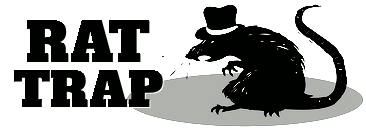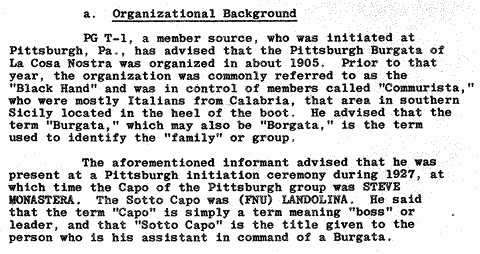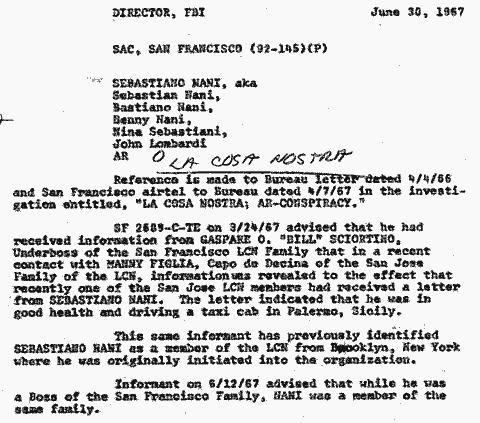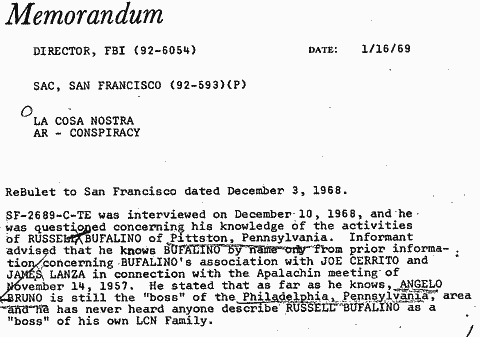"Honor is stressed as the most sacred thing in the world. To destroy another person must be for honor and not money alone..."
- Anthony Lima
It was generally accepted, until recently, that only a small number of La Cosa Nostra's 1960s-era inducted members shared confidential information with the FBI. Anthony Villano, former FBI agent and organized crime expert, wrote in his memoir that there were no more than a dozen informants in the entire LCN at the time.
It has since come to light, through the release of declassified FBI reports, that many more LCN members secretly cooperated. And at least one of those informants had been an LCN boss.
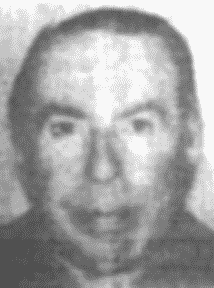
Lima
In 1965, Anthony Lima, former boss of the San Francisco Crime Family, began to secretly share confidential information with federal law enforcement. [1] The veteran LCN member provided an insider's view of organized crime from the highest levels.
Lima told federal agents about his induction ceremony, provided details about the history of the Pittsburgh Crime Family, and identified LCN members, many for the first time, in Pittsburgh and the San Francisco Bay Area. He kept the FBI up-to-date on the activities of LCN members and helped shape the Bureau's organized crime investigations across the country.
What follows is taken from Lima's FBI debriefing sessions between 1965 and 1969. Only a small but tantalizing portion of his informant file has been declassified to date. Much remains secret. Lima's information sometimes contained inaccuracies, but it is presented here as he told it. [2]
Informant profile
A San Francisco Crime Family informant, designated as "SF 2689," secretly shared confidential information with federal law enforcement. The FBI described him as an "old time member" who was "familiar with La Cosa Nostra activities in both the Pennsylvania and California areas and who has been a known member of the organization for years." According to an 1967 FBI report, the informant had been the "boss" of the San Francisco Crime Family. [A] The FBI reported that he visited Johnstown, Pennsylvania. [B]
SF 2689 exposed: There were four known bosses in the history of the San Francisco LCN Family. At the time informant began to cooperate, in 1965, only two of them, current boss James Lanza and former boss Anthony Lima, were alive. The wording of the FBI report indicates the informant "was" the boss, meaning in the past. That leaves Lima as the only possible suspect. Lima had been boss in San Francisco starting in 1937 before he fell from power in 1953. He was born in Johnstown, Pennsylvania.
Pittsburgh induction ceremony
Anthony Lima told federal agents that he was inducted into the Pittsburgh LCN family in 1927. [3] He said the boss at the time was Stefano Monastero and the underboss was Nicasio Landolina. He would have been about twenty-two at that time.
Lima told federal agents that the Pittsburgh Crime Family, or "Burgata" as he called it, was established about 1905. Before that, the Italian-Sicilian underworld was more fragmented. An early extortion group known as the "Black Hand" was comprised of Italians from Calabria. The Black Hand became associated with a regional Neapolitan Camorra organization, and they subsequently merged with the Sicilian Mafia. (In Italy, the Neapolitan Camorra network is distinct from the Calabrian criminal societies, now collectively known as 'Ndrangeta, and the Sicilian Mafia. Transplanted into the U.S., these organizations eventually blended into an Italian-Sicilian crime syndicate the FBI labeled, "La Cosa Nostra.")
Lima explained the significance of the induction ceremony and broke down the membership rules. He said the sponsor of the proposed member would take a knife or pin and draw blood by pricking his finger. The blood of the proposed member was then smeared on a holy card. The card was lit on fire and placed in the cupped hands of the proposed member. The sponsor would then "affirm" that the proposed member would uphold the rules and code of the organization. [4]
According to Lima, "Honor is stressed as the most sacred thing in the world. To destroy another person must be for honor and not money alone. A member is warned never to engage in an affair with the wives of other members. A member must never engage in white slavery or narcotics, both crimes which are degrading to the name of the organization. A member must obey the complaints and instructions of his superior and is never to take the life of a fellow member before presenting his grievance to the Commission. A member must do nothing which would affect the organization without first receiving permission from a superior."
The proposed member was warned that, if he ever betrayed the organization, he would be "destroyed" just like the burning holy card. Afterward, all the members embraced the new initiate and kissed him on both cheeks. Lima never indicated what role the boss or capodecina played in the ceremony.
The inclusion of a burning holy card in Lima's description differs from the experience of Samuel Mannarino, another member of the Pittsburgh Crime Family. Mannarino told federal agents that his finger was pricked during his induction ceremony but no holy card was used or lit on fire. Mannarino couldn't say if holy cards were used in other induction ceremonies but he personally "never got no burns on my hands that way." [5] Mannarino's precise initiation date is unknown - he refused to say - but he did imply he was inducted by John LaRocca in the 1940s.
The different rituals experienced by Lima and Mannarino suggest the Pittsburgh Crime Family induction ceremony may have evolved over time as the separate Mafia groups in the area were united into the LCN.
Lima bio
Anthony Lima was born in 1905 at Johnstown, Pennsylvania, an industrial city east of Pittsburgh. His family had traveled to the area from Sicily looking for work. Western Pennsylvania was known for its steel, iron and coal production, as well as for its reliance on immigrant labor.
Lima came from a family connected to organized crime. Evidence suggests his uncle and cousin were, like Lima himself, early members of the Pittsburgh Crime Family. There is no indication that Lima's father was an LCN member (although he might have been) but he was on good terms with Mafia members in Sicily and in the United States.
In 1928, Anthony Lima was charged with murder while he was living in the Pittsburgh-area. Acquitted at trial, he soon relocated to San Francisco and began to associate with the local Italian underworld. His uncle and cousin also relocated to California and became affiliated with the San Francisco Crime Family. [C] Lima married his uncle's daughter; they later divorced.
In California, Lima had a financial interest in a fruit farm and he operated an olive oil business with future San Francisco Crime Family boss Michael Abati. Lima was described by law enforcement at the time as "Mafia killer who is greatly feared by the Italian residents of the Stockton-Lodi, California, area. He specializes in extortion and fraud." [D]
Lima became boss of the San Francisco Crime Family in 1937. He replaced Francesco Lanza who had formally established the LCN family in the early 1930s. Lima was boss for sixteen years. He lost power in 1953, when he was convicted of theft and sentenced to four years imprisonment. [E] While he was incarcerated, Lima was replaced as boss by his former business partner and underboss, Michael Abati.
After he was released from prison, Lima continued to operate as a soldier although the FBI no longer saw him as a top priority. He was dropped from FBI's "Top Hoodlum" investigations into Mafia leaders. His investigative file was marked "closed". [F] Lima died in 1986.
John LaRocca and Pittsburgh
Anthony Lima told federal agents that John LaRocca was the boss of the Pittsburgh Crime Family. He said they used to be close associates. He called LaRocca an "extremely fine individual" who had conducted himself "fairly and well during the past 20 years." [6] Lima's statement implies that LaRocca became boss in the Pittsburgh-area sometime in the mid-to-late 1940s.
Lima claimed LaRocca "decided" to semi-retire in the 1960s and handed control to his underling Michael Genovese. Since that time, Lima said, Genovese had "completely taken over" from LaRocca.
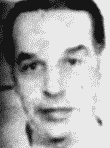
Michael
Genovese
According to Lima, Michael Genovese was a "high-type" individual who was "fearless" and "honorable." He thought Genovese would make an excellent leader and was a better choice than capodecina Gabriel "Kelly" Mannarino. Lima said Mannarino was also considered for the role but "because of his intelligence in some fields, consideration of him was withdrawn by organization members."
Lima said Joseph Regino was the boss of Johnstown, Pennsylvania. Regino was a close associate of LaRocca and one of the "principal leaders" of LCN in the region. Lima said Regino was an "extremely fine man" and was well-regarded by other members. Lima and Regino were longtime friends.
He said Samuel "Fashion" Fashionetta was a "recruit" of Regino. Fashion wasn't a member but he had to follow all the membership rules "without question." Lima said "old-time members" like Regino used individuals like Fashion to do the "dirty work" and "take all the chances." They were the "fall guys." He said a recruit would get arrested before a LCN member.
Fashion owned the "Shangri-La" restaurant. He hosted a dinner party for Lima when he visited Johnstown in July, 1968. Mobsters Joseph Regino, John Fontana and George Adragna joined them.
Dominick Anzalone
Anthony Lima had much to say about longtime Pittsburgh Crime Family member Dominick Anzalone. (Because some FBI material remains classified, Lima's available information actually reveals more about Anzalone than about himself.) [7]
Anzalone controlled gambling operations in parts of western Pennsylvania for decades. An acquaintance from their days together in the Pittsburgh-area, Anzalone began to associate with Lima again after relocating to the Bay Area in 1960.
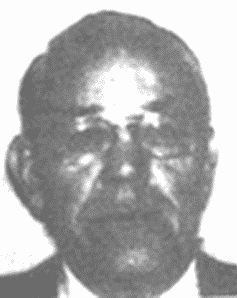
Anzalone
According to Lima, Anzalone first came to the United States in the 1920s to kill a mobster by the name of John Bondi. [8] Bondi had murdered three Mafia members in Sicily and then fled to Pittsburgh. The organization in Sicily ordered Anzalone to track down and eliminate Bondi. This suggests Anzalone was first initiated into the Mafia in Sicily. Lima became involved in the matter because Bondi was his cousin.
As it turned out, Lima's father was a close friend of Anzalone back in Sicily and he intervened as a "peacemaker" between Bondi and Anzalone. Lima's father was able to talk Anzalone out of completing his assignment. In fact, Anzalone and Bondi later became good friends.
Anzalone intended only a temporary visit to the United States but he found he liked Pittsburgh and decided to settle there without bothering to file the requisite government paperwork. His wife remained in Sicily. Anzalone became active in the local underworld and he eventually became a member of the Pittsburgh Crime Family under Stefano Monastero.
While Anzalone was making a name for himself in Pittsburgh, he learned his wife was having an affair with another man. Anzalone returned to Sicily intending to commit two murders. Lima explained to federal agents that it was mandatory at the time for an LCN member to kill a cheating wife and her lover. However, when Anzalone confronted his wife about the affair, she persuaded him to forgive her and settle for a divorce.
This was the second time Anzalone had been talked out of a committing a murder.
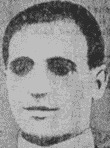
Monastero
Lima said Anzalone's failure to take revenge against his wife was a stain on his honor. Boss Stefano Monastero was so disgusted that he "dropped" or suspended Anzalone from the crime family. Lima didn't specify the year the suspension took place but Monastero was boss between 1925 and 1929.
Sometimes called being "shelved," a mob suspension was a discipline used by a boss to punish a mobster or to correct behavior. A suspended member was unable to represent himself as an LCN member or participate in crime family activities. It was a great humiliation. Suspensions could last an indefinite period of time.
Joseph Indelicato of the Gambino Crime Family, for example, was suspended for two years in the 1960s for failing to repay his debts. In the early 1950s, Philadelphia Crime Family member Rocco Scafidi was suspended for disobeying orders. It took ten years before his suspension was lifted.
Anzalone's suspension was lifted after Guiseppe Siragusa took over as the new boss of the Pittsburgh Crime Family in 1929.
Anzalone moves west
Dominick Anzalone moved to San Jose in 1960 where he found employment at the California Cheese Company. [9] The company was owned by Salvatore Marino, an old friend from Western Pennsylvania. Marino was a former member of the Pittsburgh Crime Family before he transferred his membership to San Jose. Marino was a capodecina and his son, Angelo, was part of his crew.
By getting on Marino's payroll, Anzalone hoped to fool the Immigration and Naturalization Service and make it appear that he was legitimately employed. Anzalone was fighting the federal government to avoid deportation. The INS had figured out that he had entered the United States illegally in 1922 and had been working to remove him since the 1950s.
According to Lima, the relationship between Marino and Anzalone quickly soured and Anzalone's employment at the cheese company was terminated. Afterward, Marino made trouble for him by contacting John LaRocca and claiming Anzalone had made derogatory remarks about the Pittsburgh boss. LaRocca turned on Anzalone for a time as a result.
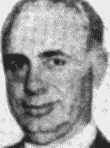
LaRocca
Anzalone was eventually able to persuade LaRocca that Marino had lied, but Lima said the relationship between LaRocca and Anzalone would "never be the same." San Jose Crime Family boss Joseph Cerrito allegedly demoted Salvatore Marino to soldier for deceiving LaRocca about Anzalone. Lima called this demotion a "slap in the face." Angelo Marino took over his father's old crew.
Anzalone needed to stay on the right side of John LaRocca for his own reasons. According to Lima, after Anzalone relocated to San Jose, he turned over control of a casino he operated in Pennsylvania to his partners in the Pittsburgh Crime Family at the request of LaRocca. They agreed to pay Anzalone an ongoing share of the profits. Instead, Anzalone received three payments totalling $30,000 before the payments stopped without explanation. Anzalone complained that LaRocca was making money by the "bushel basket."
In an attempt to get his share of the profits, Anzalone sent San Jose Crime Family underboss Charles Carbone to speak on his behalf with LaRocca. This would have been soon after Anzalone moved to San Jose. (This could mean Anzalone had formally transferred his LCN membership to San Jose. Otherwise, it's unclear why Carbone would seek a favor with an LCN boss for someone he didn't know well or wasn't part of his own crime family.) According to Lima, Carbone's visit made no difference with LaRocca and he came back empty handed. Lima never said this, but it appears likely that LaRocca intended to squeeze Anzalone out of the casino profits from the start.
According to Lima, Anzalone brought up the matter again five years later with veteran San Francisco Crime Family member Salvatore Taranto, an old friend of Lima's. (This would have been around 1965, when Lima began to cooperate.) After meeting with Anzalone and hearing all about the casino, Taranto told Lima that he had advised Anzalone to send him (Lima) to talk with LaRocca on his behalf. According to Lima, Taranto described him (Lima) as a competent individual who had a good relationship with LaRocca and could handle "most situations." Taranto reported that Anzalone would probably end up asking Lima and George Adragna, another Pittsburgh LCN member, to contact LaRocca on his behalf. The available FBI reports don't indicate what ever became of Anzalone's quest to get paid.
Lima said Anzalone's unresolved dispute over the casino profits had left him with egg on his face. Anzalone felt like he had lost the respect of his fellow LCN members. He was also upset that an automobile dealership he operated with San Jose Crime Family member Frank Sorce had failed. It cost him $60,000.
According to Lima, the real reason Anzalone's criminal associates had little respect for him was that he complained all the time about lost money but did nothing to recover what was rightfully his. The fact he was wealthy and still complained about money disgusted other members.
Lima said Anzalone was depressed that he might be kicked out of the country after a recent deportation hearing hadn't gone well. According to Lima, Anzalone's attorney had advised him to avoid contact with anyone with a "questionable reputation." Anzalone would eventually win the legal right to stay in the United States. [10]
San Francisco Crime Family
Lima had a poor opinion about the state of the San Francisco Crime Family by the 1960s. [11] He told federal agents that "LCN activity in this area seems to be at an all-time low, and they are all 'afraid of their own shadows.'" According to Lima, crime boss James Lanza offered no leadership and acted like a "rabbit." He was afraid to meet with his own soldiers in case he was observed by federal agents.
Lima speculated that the FBI would eventually drive La Cosa Nostra "completely underground" and make it harder to investigate. He said that wouldn't be a problem in San Francisco as "nothing was happening here anyway" but it could have a "serious effect" in other parts of the country where the LCN was stronger.
San Francisco Family
The San Francisco Crime Family was always one of the smallest and least active LCN groups. Established in the early 1930s, the crime family derived its income from loansharking, gambling and extortion. The crime family had four bosses through its history. The first boss, Francesco Lanza, died in 1937 of natural causes. Anthony Lima took over until 1953. He was replaced by Michael Abati who ran the crime family until 1961. After Abati was deported to Italy, James Lanza, son of Francesco, controlled the crime family until he died in 2006.
At its peak, the crime family may have had about twenty active members. By the time Lima began to cooperate, it was down to about a dozen members with an average age of seventy. About half of members were small business owners and didn't have a criminal record. The San Francisco Crime Family faded away as old members died off and weren't replaced.
Lima limited his own personal interaction with other LCN members by the late 1960s. Lima and James Lanza rarely saw each other. Two individuals Lima met with regularly were longtime San Francisco Crime Family member Salvatore Taranto and San Jose Crime Family member Emanuel Figlia. They kept Lima up-to-date on LCN activities in the both San Francisco and San Jose crime families.
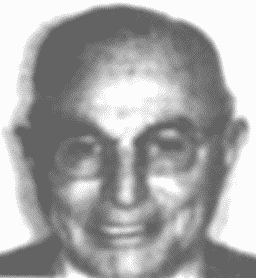
Lanza
Taranto was also greatly disenchanted with Lanza and his leadership. Lima explained that Taranto had recently been seriously ill and had almost died. Taranto complained Lanza never visited him, sent him a get well card or gave him any money to get back on his feet. According to Lima, Lanza's indifference to Taranto's well-being ran counter to how a good boss should conduct himself.
Lima told the FBI that he talked to Emanuel Figlia about Lanza's treatment of Taranto and he agreed that Lanza was "a poor excuse for a 'Boss.'" Figlia, a native of New York City, said things were better in Brooklyn where all the soldiers shared in the wealth of the crime family. He said this kept morale high and assured the loyalty of the soldiers.
Lima told federal agents that San Jose Crime Family underboss Charles Carbone died in 1967. Taranto told Lima that capodecina Figlia, Joseph Cerrito's brother-in-law, was going to replace Carbone. Cerrito had advised his subordinates that the San Jose Crime Family wouldn't be holding any more family meetings because of FBI surveillance. Members were told to contact Figlia directly if they had any complaints or problems.
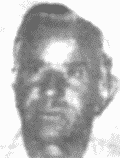
Frank
Genovese
Lima said Steve Trifiro had recently been inducted into the San Francisco Crime Family by underboss Gaspare Sciortino. The induction ceremony was witnessed by Taranto and another member named Frank Genovese. Trifiro was the son of the late Guiseppe Trifiro, also a former San Francisco Crime Family member.
According to Lima, San Francisco Crime Family capodecina Vincenzo Infusino had wanted to setup an "illegal operation" in San Francisco with the help of some associates from St. Louis, but James Lanza put an end to his plans. [12]
Lima added that Infusino had been made a capodecina by former boss Michael Abati years earlier. Lima said his title was only "honorary" because Infusino never had any soldiers reporting to him. All the members reported to underboss Gaspare Sciortino. According to Lima, Abati made Infusino a capodecina because he was wealthy and the idea was he might be able to use his influence to help the crime family. [13]
Lima revealed information about an assortment of LCN members in the Bay Area. He told federal agents that Gaspare Sciortino had recently received a letter from an old associate named Sebastian Nani.
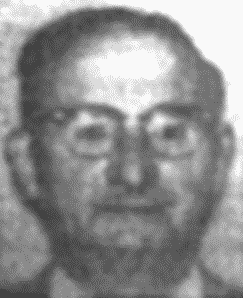
Sciortino
Nani was a former member of the Colombo Crime Family who transferred to the San Francisco Crime Family after he moved to California. Nani was a suspect with Lima in the murder of Chicago mobster Nick DeJohn years earlier. (There is no evidence Lima admitted any knowledge of the DeJohn murder to federal agents.) He was deported to Sicily in the 1950s after a narcotics conviction. According to Sciortino, Nani was living in Palermo and operating a taxi cab. [14]
Lima gave federal agents information about obscure San Francisco Crime Family members going back decades.
DeJohn murder
Nick DeJohn was an Outfit mobster who came to San Francisco after fleeing Chicago. A narcotics peddler, he became partners with Anthony Lima and Michael Abati in an olive oil business. DeJohn quickly fell out with his new friends and turned up dead in the truck of a car in 1947. Lima and Abati were charged in his murder, although no one was ever convicted. [G]
For example, Lima told them about Joseph Piazza, the former underboss of the San Francisco Crime Family in the 1930s. Piazza was part of a group of "black handers" who had originally opposed the leadership of boss Francesco Lanza. Lima said Piazza was later murdered for attempting to extort the father of future San Francisco mayor Joseph Alioto, who operated a fish company at the time.
He also told them about Guiseppe Trifiro, the father of recently inducted member Steve Trifiro. Guiseppe Trifiro was born in Sicily and became a Mafia member there. He moved to United States and settled first in New York City and then in Cleveland. He served under Cleveland LCN boss Doctor Romano. After Romano was killed, Frank Milano became his boss.
Lima said Guiseppe Trifiro transferred his LCN membership to San Francisco while he was running the crime family. Trifiro worked as a security guard at Fisherman's Wharf before he died in 1947.
Jimmy Fratianno
LCN member Jimmy Fratianno was another mobster Anthony Lima met with regularly after he relocated to the Bay Area in the late 1960s. Fratianno later became a notorious FBI informant but, at the time he was close to Lima, he was probably the most active LCN member in the area.
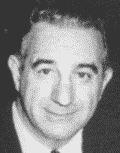
Fratianno
Lima told federal agents that Fratianno was excited that Joseph Alioto had just been elected mayor of San Francisco in 1968. Alioto, a prominent lawyer, came from a family with longstanding ties to the Italian community in San Francisco. Although he would later deny knowing many mobsters, Alioto was an old friend to Lima and Fratianno. Alioto had handled Lima's divorce from his first wife and had defended him years earlier in connection to the murder of Chicago mobster Nick De John in 1947.
Fratianno and Lima both thought the San Francisco Crime Family would benefit from Alioto's election. Lima told federal agents that Alioto would likely help LCN members where he could but he would avoid doing any favors that would come back to embarrass him.
Lima told federal agents that Jimmy Fratianno had already gotten a business loan from a bank connected to Joseph Alioto. Fratianno was "anxious" to get Alioto to help him set up a gambling operation or a vending machine business. Lima told Fratianno that he had to be patient because Alioto hadn't even been sworn in as mayor yet.
Fratianno had a low opinion of James Lanza. He told Lima that Lanza should be replaced as boss. Fratianno said Lanza was too cautious and wouldn't take advantage of the supposed opportunities under Alioto.
Fratianno told Lima that Samuel and Gabriel Mannarino from the Pittsburgh Crime Family were the secret part-owners of the Stardust Hotel in Las Vegas. He said the brothers profited from an illegal skim orchestrated by an old associate of theirs from Western Pennsylvania. [15] Lima told federal agents that the brothers were his friends and that he had "direct knowledge" that they were LCN members under John LaRocca. Years earlier, before he began to cooperate, Lima denied to the FBI that he even knew them. [16]
Bay Area gossip
Lima said San Jose Crime Family member Angelo Marino had attended the funeral of former Pittsburgh Crime Family member Samuel Mannarino at New Kensington, Pennsylvania, in 1967. Mannarino had died of cancer. Marino was a western Pennsylvania-native and his family knew Mannarino well.
Lima told federal agents about Vito Adragna. He was originally from western Pennsylvania. Adragna followed Dominick Anzalone out to California in the early 1960s. He was Anzalone's "recruit."
According to Lima, Adragna was obsessed about becoming an inducted member of LCN. He had two brothers who were LCN members and it rankled him that he wasn't. Adragna was "tired of waiting and wanted Tony Lima or Anzalone to 'make him a member of the LCN.'" Lima told federal agents that it's possible Anzalone might "make" Adragna after some prodding. [17]
Joseph Cerrito and LIFE magazine
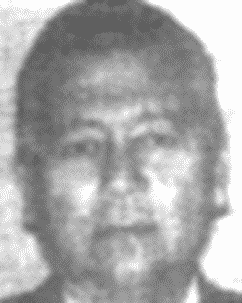
Cerrito
Beginning in 1967, LIFE, a popular American periodical at the time, published a series of hard-hitting articles about the Italian-American underworld. As part of its investigation, the magazine identified every crime boss in the country, including Joseph Cerrito in San Jose and James Lanza in San Francisco. The fallout from the articles put Cerrito and Lanza under the public spotlight for the first time.
Lima said that Cerrito was "extremely distressed" that LIFE published a photograph of him with former Bonanno Crime Family underboss Frank Garofalo. Garofalo was linked with heroin trafficking and had retired to Italy in the 1950s. Lima added that Lanza was "emotionally disturbed" that he was publicly identified as a LCN boss. [18]
Joseph Cerrito objected to being publicly identified as an LCN boss and sued the magazine for libel. Lima said that Lanza supported Cerrito's lawsuit against the magazine. [19] Anzalone offered Cerrito financial with his lawsuit. [20]
Many people inside and outside organized crime were surprised Cerrito decided to bring more attention to himself and sue the magazine. He could have just let the controversy blow over. But it turns out Cerrito was encouraged to do it by an influential underworld chief.
Squabble
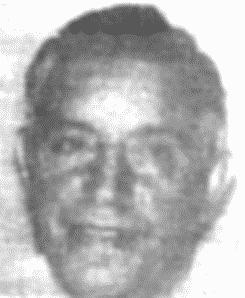
Ferrito
Lima told federal agents about a physical confrontation between LCN boss Joseph Cerrito and soldier Domenic Ferrito.
Ferrito's sister was the mother of Cerrito. According to Lima, the two men had a simmering personal dispute over the upcoming marriage of Cerrito's son. Cerrito went to Ferrito's home to tell him that he was being "removed" from the crime family.
Ferrito reacted by grabbing a knife and chasing Cerrito around the house trying to stab him. [H]
Cerrito decided to take "no action" against Ferrito despite reports of the incident getting out. Ferrito remained a member in good standing. The incident highlights how far the San Francisco Crime Family had sunk by the 1960s when the boss could be assaulted without repercussion.
According to Lima, Steve Magaddino, the LCN boss in Upstate New York and a leading member of the ruling Mafia Commission, had ordered Cerrito to file the lawsuit as a "test case." The hope was the lawsuit would force LIFE to expose its sources, something the magazine would never do, or retract the article. Unlike the other named LCN bosses, Cerrito was a successful businessman without a criminal record. The Commission figured he had a good chance of winning. Lima said other bosses would file lawsuits if Cerrito won.
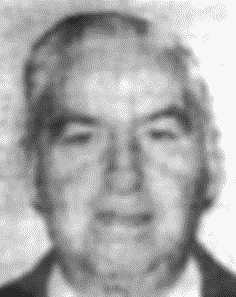
Figlia
There hadn't been a formal Commission meeting to decide the matter, but Magaddino had contacted each Commission member personally for their input. Cerrito received his instructions from Magaddino at a "pre-arranged telephone pay station." [21] [22]
The lawsuit angered a number of Cerrito's LCN underlings after they were required to give sworn depositions. [23] San Jose Crime Family underboss Emanuel Figlia said "we are all ruined around here because of the publicity." Figlia said the lawsuit was bad for everyone's business. He said Cerrito should have resisted the Commission's efforts to make him file the lawsuit. Salvatore Taranto countered that Cerrito had no choice because "you just don't fight the Commission unless you want to suffer the consequences." [24]
Cerrito would regret following Magaddino's instructions. Cerrito would lose his car dealership after Lincoln-Mercury decided to drop him following the bad publicity. It had been a source of pride to LCN members in San Jose that their boss was connected to such a prestigious brand. Lima said it was a severe blow to the prestige of the San Jose Crime Family. Cerrito's lawsuit against the magazine would eventually be dismissed
The mobsters that you meet
Lima provided information on a wide range of individuals that he had met or had heard about.
In one debriefing session, the FBI asked Lima if he knew Russell Bufalino. [25] Bufalino was the boss of a small crime family centered around Pittston in northeastern Pennsylvania. The low-key mobster had attended the Apalachin meeting but had remained mostly under the radar. As late as 1967, the FBI couldn't pin down his crime family affiliation or his rank.
Member-informants Harry Riccobene and Rocco Scafidi from Philadelphia both told federal agents that they had never heard of the Bufalino Crime Family. Scafidi said Bufalino was, in fact, a capodecina in the Lucchese Crime Family.
Lima said he knew Bufalino "by name only" and that he had attended the Apalachin meeting along side mobsters like Joseph Cerrito and James Lanza. But Lima said he had never heard of the Bufalino Crime Family or heard anyone refer to Bufalino as a LCN boss. [26]
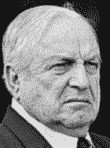
Marcello
According to Lima, Carlo Marcello from New Orleans was among the more powerful LCN bosses in the country. Lima said he had never met him but he knew Marcello commanded the respect and loyalty of his subordinates. According to Lima, Marcello had a reputation for looking out for the financial well-being of his men. He made certain that they shared in the spoils of the organization. Lima said Marcello had a great deal of influence over corrupt politicians and law enforcement officials in the New Orleans-area. [27]
Lima advised that he had heard that Joseph Bonanno had plans to settle on the "West Coast" after he had been "kicked out of the New York Family." He said Bonanno had better keep his head down or would become a "marked man." [28]
According to Lima, the Kansas City Crime Family had a financial interest in the Las Vegas Landmark Hotel and Casino that was being built in the 1960s. He said Anthony Civella, nephew of crime boss Nick Civella, acted as the family representative in Las Vegas and was keeping an eye on the construction process. [29]
Lima told federal agents in 1967 that no representative from the San Francisco Crime Family would attend the funerals of the recently deceased New York City crime boss Thomas Lucchese or Los Angeles crime boss Frank Desimone.
In many of Lima's debriefings, federal agents (at the behest of other FBI offices) would simply throw out a name and ask him to comment. Often, he couldn't provide any real insights. For example, Lima told federal agents he knew Joseph Zerilli was the boss of the Detroit Crime Family but that he had no information about his activities or the names of any other members. [30]
Lima embraced his role as an informant. One time, FBI asked him if he knew Dallas LCN boss Joseph Civello. [31] Lima told agents that he didn't know him but that he would make further "inquiries" with his "sources" on behalf of the FBI.
The significance of Lima
Anthony Lima was instrumental in shaping the FBI's investigation into LCN actives in the San Francisco and Pittsburgh-areas. Here's one example of how he helped the FBI to target mobsters. In 1968, Lima visited his hometown of Johnstown to meet up with two lifelong mobster friends, Joseph Regino and George Adragna. After the visit, the FBI stated it would get "a complete run-down of activities relating to the Pittsburgh 'family' of La Cosa Nostra from SF 2689-C-TE…" [32] The FBI advised it would take "any action deemed advisable upon learning the results of the visit."
We don't know why Lima decided to share confidential information. [33] The available FBI reports don't give any real insight into his motivation. Did he get jammed up with law enforcement? Did he need money? Did he fall out with James Lanza? Or was he simply taking out "insurance" with the FBI in case he got in trouble down the road? The explanation is still buried inside his informant file. We do know that it was agents from the San Francisco Office, and not Pittsburgh, that persuaded him to talk.
Lima shared confidential information with the FBI until at least 1969, but it's unclear how long he continued. One FBI document described Lima as a "former" informant by 1976, which suggests he had stopped talking, for a time anyway, at some point between those two dates. [34]
In some ways, the most exciting thing about Lima's cooperation is what lies undiscovered in his informant file. What is currently available is likely only a fraction of his total FBI informant file.
As an LCN boss beginning in the 1930s, Lima may have had personal dealings with legendary crime bosses, like Joseph Bonanno, Paul Ricca and Jack Dragna, that could shed new light on important LCN events. He could give researchers a whole new perspective about the early history of LCN. He could, for example, confirm the identities of early unknown LCN bosses. At the very least, Lima could help to broaden our understanding of high level policies and procedures affecting the Pittsburgh and West Coast crime families going back decades.
Notes
1 FBI, La Cosa Nostra, San Francisco Office, Sept. 12, 1967, NARA Record No. 124-10293-10340, p. "C." It appears Lima first began to cooperate in July, 1965: FBI, La Cosa Nostra, San Francisco Office, Aug. 23, 1968, NARA Record No. 124-10297-10131, p. "L." He eventually began to meet monthly or even weekly with the FBI: FBI, La Cosa Nostra, Pittsburgh Office, Aug. 21, 1968, NARA Record No. 124-10297-10123, p. "C." This document indicates he began to cooperate in November, 1965.
2 The available information about Lima's induction ceremony was taken from a summary done by the Pittsburgh Office and not the original interviews done by the San Francisco Office. Consequently, there isn't as much detail as we would like.
3 FBI, La Cosa Nostra Pittsburgh Division, Pittsburgh Office, Aug. 31, 1967, NARA Record No. 124-10287-10396. Lima is informant T-1, T-6 and T-11 in this report. Contrary to what the report indicates, T-14 is actually the same informant as T-2, T-3, T-7 and T-17. That informant has been identified as Samuel Mannarino. See the Rat Trap article, "Retired big shot provided FBI with glimpse inside Pittsburgh Mafia."
4 Nowhere in the report does it indicate the proposed member actually affirmed the oath himself. This may be an oversight or misunderstanding on the part of the Pittsburgh Office FBI agent who provided the summary.
5 FBI, La Cosa Nostra, Pittsburgh Office, Aug. 31, 1967, NARA Record No. 124-10287-10396, p. 7.
6 FBI, La Cosa Nostra, Pittsburgh Office, Aug. 21, 1968, NARA Record No. 124-10297-10123.
7 One of the best sources of declassified FBI documents about La Cosa Nostra is found at Mary Ferrell Foundation. It was compiled to aid research into the assassination of John F. Kennedy. It has expanded to include source material on the Robert F. Kennedy and Martin Luther King Jr. assassinations, the Watergate scandal, organized crime and other subjects.
8 FBI, La Cosa Nostra Pittsburgh Division, Pittsburgh Office, Aug. 31, 1967, NARA Record No. 124-10287-10396.
9 FBI, La Cosa Nostra, Pittsburgh Office, Aug. 31, 1967, NARA Record No. 124-10287-10396. The federal government said that Anzalone's trip to Sicily and back occurred in 1928. ("Anzalone wins deportation hearing stay," Pittsburgh Post-Gazette, March 27, 1954, p. 11.) His first wife's name was Francesca Campisi.
10 FBI, La Cosa Nostra, San Francisco Office, Sept. 12, 1967, NARA Record No. 124-10293-10340. In 1954, the Immigration and Naturalization Service began to investigate Anzalone's immigration status. The INS determined that he was in the country illegally and ordered him deported in 1966. Anzalone won his appeal to stay in 1967.
11 FBI, La Cosa Nostra, San Francisco Office, Sept. 12, 1967, NARA Record No. 124-10293-10340.
12 FBI, La Cosa Nostra, Sacramento Office, Aug. 20, 1968, NARA Record No. 124-10297-10122.
13 FBI, La Cosa Nostra, San Francisco Office, Sept. 12, 1967, NARA Record No. 124-10293-10340, p. 3.
14 FBI, Sebastiano Nani, San Francisco Office, June 30, 1967, NARA Record No. 124-10287-10350.
15 FBI, Stardust Hotel, Las Vegas, Feb. 24, 1967, NARA Record No. 124-90032-10053. He was likely referring to Milton Jaffe.
16 FBI, Samuel Mannarino & Gabriel Mannarino, Pittsburgh Office, May 4, 1959, NARA Record No. 124-10283-10052, p. 18. In 1959, Lima denied knowing Samuel Mannarino. After he began to cooperate, he admitted they were good friends.
17 FBI, La Cosa Nostra, San Francisco Office, Aug. 23, 1968, NARA Record No. 124-10297-10131, p. 8. George Adragna was a member of the Pittsburgh Crime Family and Joseph Adragna was a member in New York City. According to Dominick Anzalone, Joseph was "sharper" than his brother George.
18 FBI, Joseph Cerrito, San Francisco Office, April 24, 1968, NARA Record No. 124-10288-10459.
19 FBI, La Cosa Nostra, New York Office, Sept. 26, 1968, NARA Record No. 124-10290-10437, p. 293.
20 FBI, Joseph Cerrito, San Francisco Office, April 24, 1968, NARA Record No. 124-10288-10459.
21 FBI, La Cosa Nostra, New York Office, Sept. 26, 1968, NARA Record No.124-10290-10437, p. 292.
22 FBI, La Cosa Nostra, New York Office, Sept. 26, 1968, NARA Record No. 124-10290-10437, p. 39. Lima said Magaddino's "territorial rights" included "Buffalo, New York, Canada and the Youngstown-Erie section, but this does not necessarily mean everything between Buffalo and Youngstown, Ohio..."
23 FBI, La Cosa Nostra, New York Office, Sept. 26, 1968, NARA Record No.124-10290-10437, p. 295.
24 FBI, La Cosa Nostra, San Francisco Office, Aug. 23, 1968, NARA Record No. 124-10297-10131, p. 32.
25 FBI, La Cosa Nostra, Director, Dec. 3, 1968, NARA Record No. 124-10293-10257. Agents were directed to ask this question by FBI headquarters.
26 FBI, La Cosa Nostra, San Francisco Office, Jan. 16, 1969, NARA Record No. 124-10290-10483.
27 FBI, Carlos Marcello, New Orleans Office, April 26, 1968, NARA Record No. 124-10200-10264, p. 1a.
28 FBI, La Cosa Nostra, San Francisco Office, Sept. 12, 1967, NARA Record No. 124-10293-10340.
29 FBI, La Cosa Nostra, Kansas City Office, Sept. 15, 1967, NARA Record No. 124-10293-10263, p. 26.
30 FBI, La Cosa Nostra, San Francisco Office, June 28, 1967, NARA Record No. 124-10287-10343.
31 FBI, James Francis Civello, Dallas Office, Nov. 30, 1966, NARA Record No. 124-10298-10053, p. "B".
32 FBI, La Cosa Nostra, Pittsburgh Office, Aug. 21, 1968, NARA Record No. 124-10297-10123, p. "B".
33 FBI, La Cosa Nostra, San Francisco Office, Sept. 12, 1967, NARA Record No. 124-10293-10340, p. 10. Interestingly, Lima's uncle and fellow LCN member, Salvatore Lima, died about the same time he began to cooperate. Lima allegedly had other relatives that were LCN members but he never identified them as members, at least in the available FBI reports.
34 FBI, La Cosa Nostra, New York Office, Jan. 16, 1976.
A FBI, Sebastiano Nani, San Francisco Office, June 30, 1967, NARA Record No.124-10287-10350.
B FBI, La Cosa Nostra, Pittsburgh Office, Aug. 21, 1968, NARA Record No. 124-10297-10123, p. "b" cover page.
C FBI, La Cosa Nostra, San Francisco Office, Sept. 12, 1967, NARA Record No. 124-10293-10340, p. 10.
D U.S. Treasury Department Bureau of Narcotics, Mafia: The Government's Secret File on Organized Crime, New York: HarperCollins, 2007, p. 35.
E A report produced by the California Department of Justice in September, 1977, indicated Lima remained boss until 1958. The available FBI documents aren't entirely clear on the exact date Michael Abati replaced Lima as boss, but it's generally accepted that it occurred in 1953. Presumably Lima would have told the FBI the exact years he was boss.
F FBI, Samuel Mannarino & Gabriel Mannarino, Pittsburgh Office, May 4, 1959, NARA Record No. 124-10283-10052, p. 18.
G FBI, James Joseph Lanza, San Francisco Office, Dec. 29, 1960, NARA Record No. 124-10222-10385, p. 17. Also charged were Leonard Calamia, Sebastiano Nani and Frank Scappatura.
H FBI, La Cosa Nostra, Sacramento Office, Aug. 20, 1968, NARA Record No.124-10297-10122.
